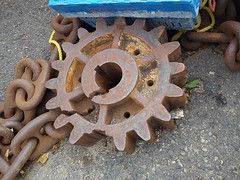Ready for the next item on the test suite agenda? This time the topic is Autoloading. We use a rather simple autoloading setup for most component test suites. It requires no additional setup and works out of the box if you run php AllTests.php.
That is already nice and allows running the complete test suite without further ado. But I must admit that I want more. My default work mode looks like this:
- open test case (and modify it)
- hit <f3> <f8> to run phpunit on this single test case
- hit <f4> <f4> to to jump to the code line that produced the first error
This allows me to add a new test definition and immediately run it so that I can check for problems. And I don't need to execute the full AllTests.php to get feedback on the new test. So I'm annoyed every time I hit a test case that does not allow me to do that. A working autoloading setup is the key for that.
Luckily not only my own preferences make using an Autoload.php file in a test suite attractive. There are a number of reasons why such a file can be useful. The Wiki page for the Horde_Test component details them and this is a copy of the relevant section:
The Autoload.php file is not required in a test suite but it is strongly recommended that you use it. It's purpose is to setup PHP autoloading so that all tests in the test suite automatically have access to all the classes required for executing the tests. The reason why it is not mandatory is that Horde_Test_AllTests already loads a basic autoloading definition that works for most framework components.
This means that running php AllTests.php usually does not hit any autoloading problems. Running a single test case (e.g. phpunit Horde/Xyz/Unit/UnitTest.php) is a different matter though.
The *Test.php files do not extend Horde_Test_AllTests and thus there is nothing that would magically setup autoloading if you try to run such a test suite in isolation. And running single test cases can be quite convenient if the whole test suite would take a long time to execute. Using an Autoload.php file alongside the AllTests.php file is the recommended way to provide a single test case with autoloading and thus enable commands such as phpunit Horde/Xyz/Unit/UnitTest.php. In addition the file is helpful for any case where you need slightly more complex loading patterns or want to pull in special files manually.
Once you created an Autoload.php file for your test suite it will also be heeded by Horde/Test/AllTests.php. The latter will avoid the basic autoloading setup if it detects the presence of an Autoload.php file for the current test suite. That one will be loaded and is assumed to contain the required autoloading setup.
The content of Autoload.php
You should at least require the Autoload.php from Horde_Test in this file. This is also what Horde_Test_AllTests would do when choosing the simple autoloading setup.
require_once 'Horde/Test/Autoload.php';
It also makes sense to adapt the error reporting level to the same standards as required in the AllTests.php wrapper:
error_reporting(E_ALL | E_STRICT);
If you derive your test cases from a central test case definition you should load this one in Autoload.php as well:
/** Load the basic test definition */
require_once dirname(__FILE__) . '/TestCase.php';
Sometimes it makes sense to pull in the definition of test helpers that may be used throughout the test suite. They are usually not available via autoloading and need to be pulled in explicitely:
/** Load stub definitions */
require_once dirname(__FILE__) . '/Stub/ListQuery.php';
require_once dirname(__FILE__) . '/Stub/DataQuery.php';
Real world examples for Autoload.php helpers can be found in the Horde_Date and the Kolab_Storage components.
Within the test cases you only need to load the Autoload.php file which usually looks like this (and obviously depends on the position of the test case in the directory hierarchy of the test suite):
require_once dirname(__FILE__) . '/../Autoload.php';
You'll find additional background information on autoloading within test suite runs on the Wiki page for the Horde_Test component.







